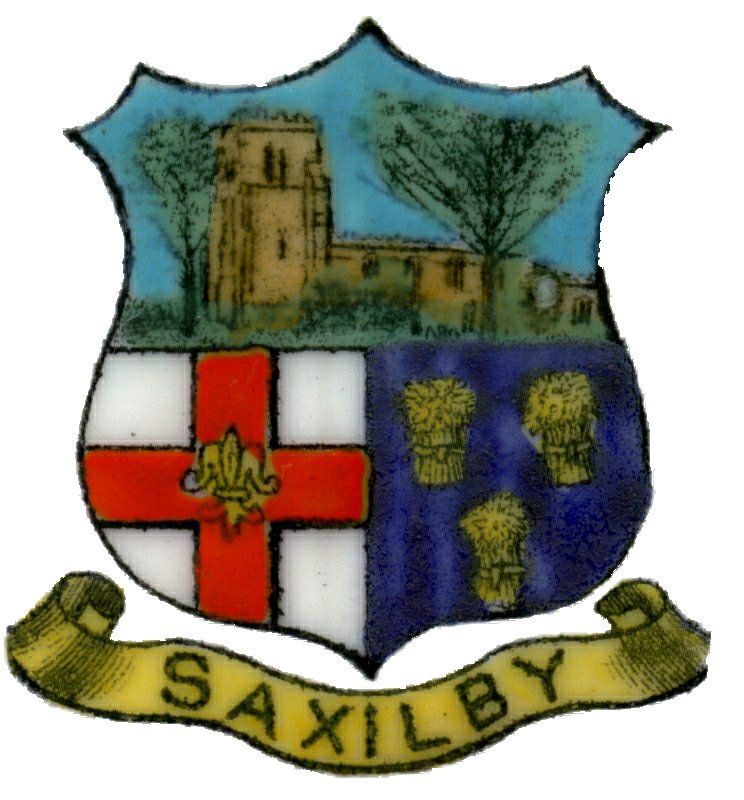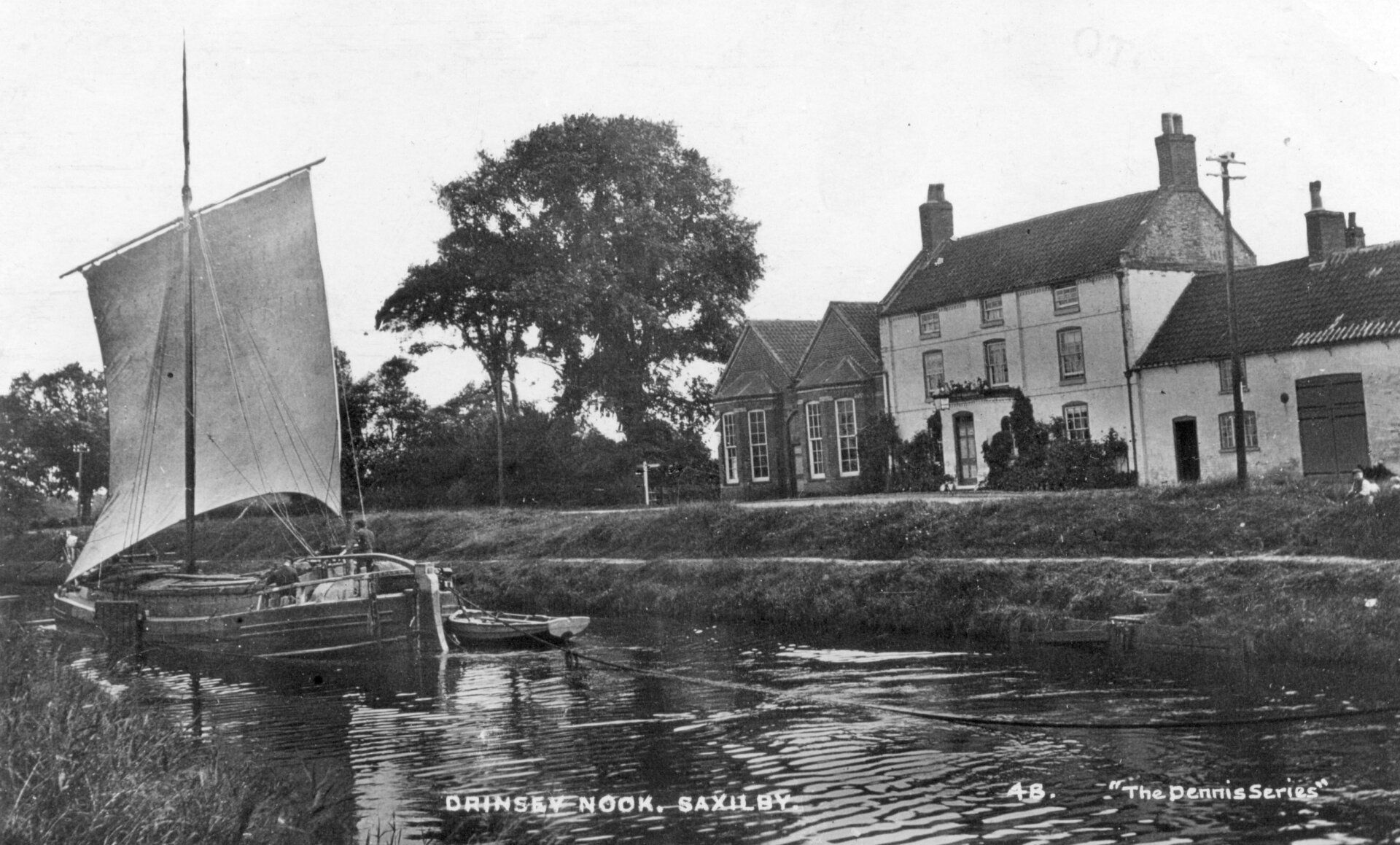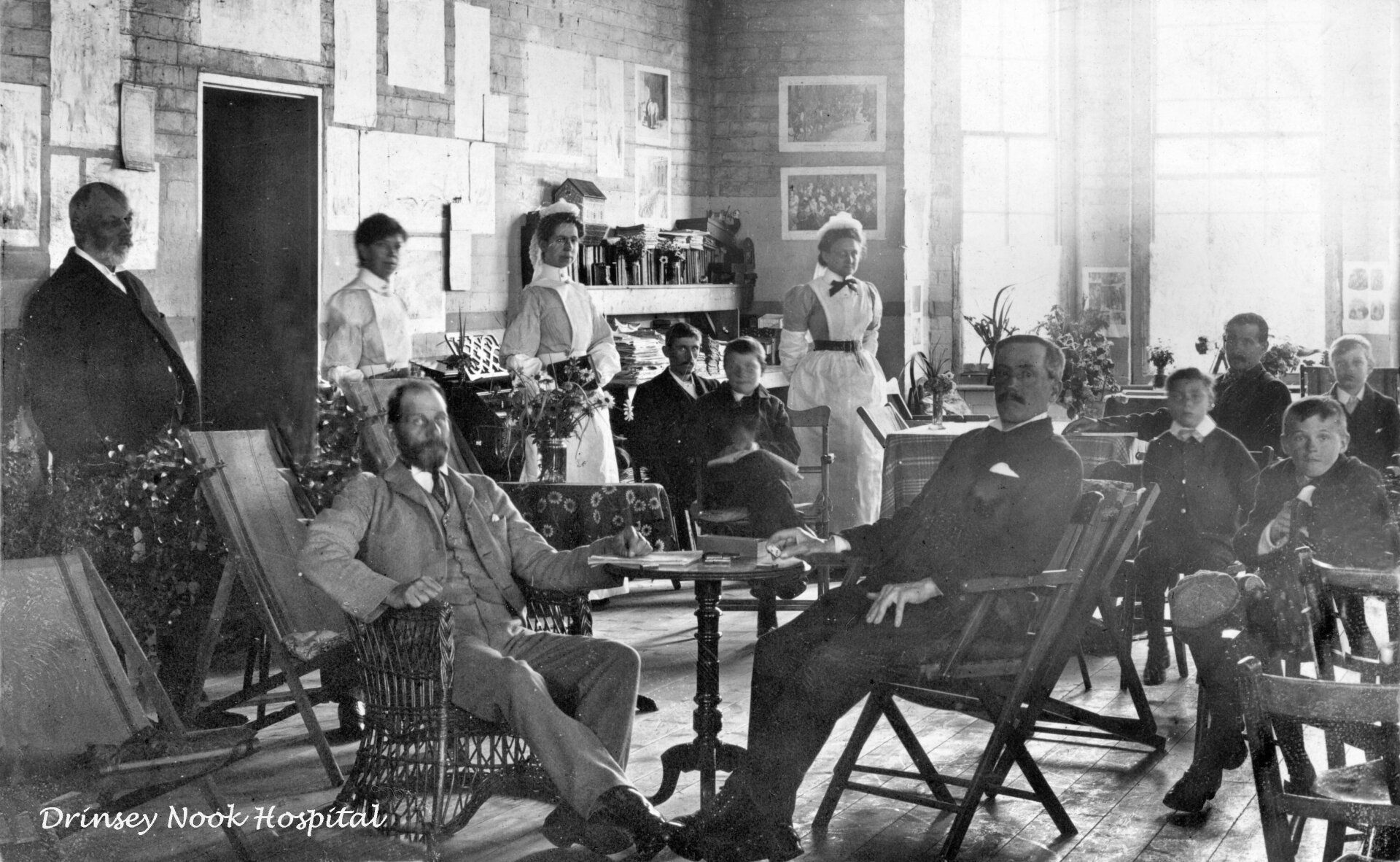Drinsey Nook
A small hamlet of a few houses, straddling the border of Lincolnshire and Nottinghamshire. It sits on the banks of the Foss Navigation at the junction of the A57 Lincoln to Worksop road and the A156 Lincoln to Gainsborough road.
The name is derived from the Danish ‘Drenges Eye’, meaning ‘Dreng’s Island’. Like ‘Saxilby’ (Saxulf’s Farmstead), the name would have been given by Danish settlers following the Viking invasions of eastern England in the 8th and 9th centuries.
Vikings came from the whole of Scandinavia. They did not have horns on their helmets (a Victorian invention!). The name means ‘sea pirate’.
For example, Charles Anderson wrote in his diary of his journey from Lea to Lincoln during the late 18th century - `We used in going to Lincoln to have horses from Lincoln to meet us at Drinsey Nook, otherwise we should never have got there. We generally had four horses, and the road used frequently to be under water'.
The 'Buffalo' Inn.
The landlord in 1887 was Alfred Tear. He expanded the business, as an article in the 'Lincolnshire Chronicle' of June that year shows – 'Drinsey Nook is surrounded with charming walks, such as would repay anyone at this time of the year, when the trees are in full foliage. Unfortunately however, it has borne in the past a very bad name for the comfort and convenience of visitors, the principal difficulty being in the matter of refreshments of a non-alcoholic nature.
Recently, however, there has been a change in the management, and we are informed that it is now the intention of the proprietors to do all they possibly can towards securing the comfort and convenience of their patrons.
Within easy distance of Lincoln, from which city it can be reached by rail, road and river, there should be no difficulty in rendering it a most popular resort.
Truly a better spot for 'ruralising' could not be had, and with the additional attraction to the lovely walks of fishing and boating in the Foss, which runs by the side of the house, one could very well spend a few days of enjoyment there.
For the convenience of large parties, we are told that there is now a spacious building adjoining the Inn, capable of holding 500 persons, and a capital field near for sports and pastimes.'
The Rev. George Hall, in his book 'The Gypsy's Parson', written in 1914, describes the 'Buffalo' – 'A few miles outside my native city, there stands on the bank of the Roman Fossdyke a lonely house known as “Drinsey Nook”, a tavern with bowling greens, swings and skittle alleys, a resort of wagonette and boating parties out for a frolic in the sunshine.
Today, as of yore, the brown-sailed barges, laden with grain or scented fir-planks, glide lazily past the place, and a motor-boat will at times go racing by, to the alarm of the waterhens.
One golden October morning, my father hired a small sailing craft, and we were wafted along the Fossdyke as far as the said riparian house of call. Hour after hour we wandered in the beech woods stretching behind the inn.
Linked with this ramble is an impression I have never forgotten. “Look,” said my father, pointing to a decayed stump of a post, “this is all that remains of Tom Otter's gibbet-tree.'
Prisoner of War Camp
We received a family history enquiry from someone whose Grandfather was a German P.O.W.. Alfred Lessig came to the Camp in 1944. He worked at Orchard Farm, Hardwick. After the war he remained in Saxilby, married a local girl, and died in 1980. He is buried in the churchyard.
This enquiry led us to ask more about the P.O.W. Camp. We are grateful to Ken Kitchen for providing more detail.
There was only one prisoner of war camp in the area at Drinsey Nook. This was a small satellite camp of camp 52, at Nether Headon, Retford. - It opened in 1943 or late 1942 to accommodate Italians who had mainly been captured in north Africa i.e. Benghazi, Tripoli, Tunisia etc.
They were very much ‘Mussolini’ men and when he was deposed and Pietro Badoglio became Italian Prime Minister, they regarded the latter as an arch traitor and were livid.
The Italian POWs worked on local farms mainly. When I became friendly with four or five who worked for Swales initially at Ouseness Farm, they occasionally took me in to the camp to hear them playing a violin. Very musical and Catholic, featuring tunes like Ave Marie which I could then hear.
They went to various places; one was Selby, when finally preparing for repatriation. A Sicilian came back afterwards and brought us a box of Medlars, the first we had seen or tasted. He was then working at Wellingore but I lost touch eventually. Others stayed in touch and we have been to Italy and stayed in one’s home. Sadly all dead, and only the widows remain.
They were industrious hobby-wise in the camp and made all kinds of things with anything they could lay hands on: jewellery from coins and baskets from willows that they collected from the pits by Saxilby railway line. I still have one they made for Mother.
The camp was used for Germans after the Italians vacated, until they too were repatriated. I’m not too sure about later details but the camp probably housed Displaced Persons, because in 1949 I worked at Harby and there were two Ukrainians next door at Pixley’s who were living at Camp 52.


